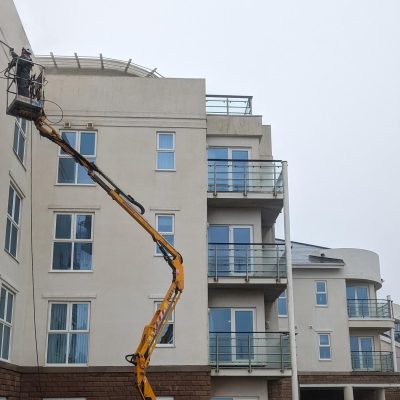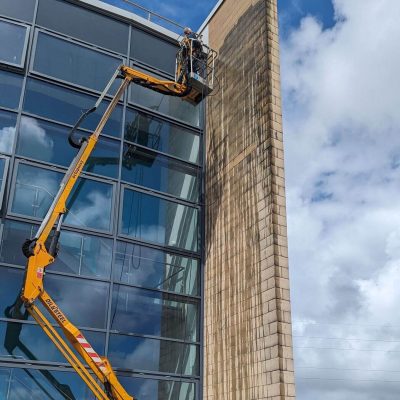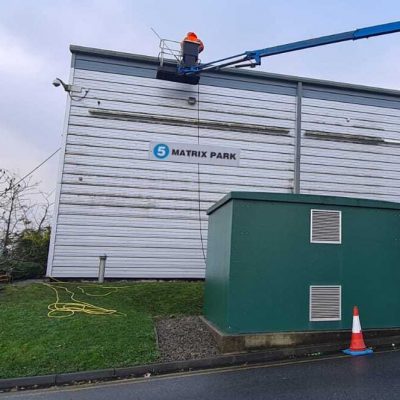If you operate machinery or equipment in a workplace in England, you need to be aware of two important sets of regulations –
- PUWER &
- LOLER.
These regulations help ensure that any equipment used at work is safe and fit for purpose.
In this blog post, we’ll take a look at what PUWER and LOLER regulations cover, who they apply to, and what your responsibilities are under each set of regulations.
What is PUWER and what does it stand for?
PUWER stands for the Provision and Use of Work Equipment Regulations 1998. These regulations apply to all work equipment used in workplaces, including machinery, apparatus, tools, installations and vehicles.
Who does the PUWER regulation apply to?
The PUWER regulations apply to any person who has control of work equipment or its use at work. This includes employers, the self-employed and any person who has control of work equipment, even temporarily, such as hire companies.
Employees also have responsibilities under PUWER to use work equipment safely and report any unsafe conditions to the employer.
What are the main requirements of PUWER?
The main requirements of the PUWER regulations are:
– Ensuring equipment is suitable and safe for its intended use:
Employers must ensure equipment is made and constructed to be suitable for its intended purpose and can be used, adjusted and maintained safely by workers. A risk assessment should be carried out.
– Providing adequate instructions, information & training:
Employers must provide workers with comprehensible information and any required training on how to use equipment safely. Instructions must be updated in relation to changes in equipment or procedures.
– Ensuring equipment is maintained:
Equipment must be maintained regularly and kept in good working order. A suitable maintenance log should be kept.
– Providing controls and suitable safety measures:
Equipment controls must be clearly visible, identifiable and within reach of the operator. Emergency stop controls should be provided where necessary. Guards, protective devices etc. must also be provided and well-maintained.
– Marking equipment with health & safety warnings:
Relevant safety markings and warnings must be marked on equipment and be understandable to workers.
– Providing a suitable working environment:
Work areas must have adequate space and lighting for equipment to be used safely. Floors and traffic routes must be suitable and floors kept free from obstruction.
What is the LOLER regulation and what does it stand for?
LOLER stands for the Lifting Operations and Lifting Equipment Regulations 1998. These regulations apply to any equipment used to lift loads in workplaces, including cranes, lifts, hoists, mobile elevating work platforms and lifting accessories.
Who does LOLER apply to?
Like PUWER, LOLER applies to a wide range of people involved in work equipment including employers, the self-employed and people who have control over lifting equipment, even temporarily.
Employees also have a duty to report defective equipment and use it properly. Organisations who manufacture, supply, install, refurbish or let lifting equipment on hire also have responsibilities under LOLER.
What are the main requirements of LOLER?
The main requirements of LOLER are:
– Ensuring lifting equipment is sufficiently strong, stable and suitable for particular use:
Equipment should have enough strength and stability considering the loads lifted and stress factors. Accessories must be compatible and anchors secure.
– Positioning and installing equipment properly:
Equipment needs to be positioned/installed to reduce risks e.g. from the equipment or the load falling or striking people. Environments around equipment should also be suitable.
– Ensuring equipment is visibly marked with any necessary information:
Equipment should clearly show information like safe working loads, identification marks and warning signs. Accessories like slings should be marked with their safe working load.
– Maintaining and inspecting equipment:
Equipment must be inspected before first use or after assembly or installation. It then requires regular, thorough examinations by competent people. Examinations look for damage, wear, corrosion and that safety features are working.
– Ensuring lifting operations are planned and organised:
Lifting operations need proper planning, appropriately trained and competent people appointed to supervise tasks and coordinate operations.
– Providing training & information:
Workers using lifting equipment must have adequate training. Lifting equipment operators need specific training to recognise defects and make thorough examinations.
What are the penalties for non-compliance?
Failure to comply with PUWER or LOLER regulations is a criminal offence and can result in heavy fines or even imprisonment.
There can also be civil claims if an incident leads to damage or injury. The cost of damage, fines, legal action and compensation payments could be extremely high.
Non-compliance can also lead to prohibition notices being served by the Health and Safety Executive (HSE), preventing further use of equipment or activity until issues are resolved. Negative publicity is also likely.
It is vital that employers, managers, employees and any other duty holders fully understand their responsibilities under PUWER and LOLER. Compliance helps avoid incidents, injuries and costly damages that non-compliance could lead to.
PUWER and LOLER in practice – example scenarios
To understand PUWER and LOLER better, let’s look at some example scenarios and how the regulations would apply:
Scenario 1:
A construction company provides a new cement mixer for use on a building site. What might they need to do to comply with PUWER?
The company would need to ensure the cement mixer is made to a suitable standard for mixing cement and suitable for site conditions. A risk assessment should check risks like vibration, dust and operation space. Guards must be fitted and controls suitably placed and marked. They must provide information and training to users on safe operation, maintenance, inspection etc. The mixer should be regularly serviced and inspected to ensure it remains safe.
Scenario 2:
A warehouse receives a new 2 tonne overhead gantry crane. What steps must they take to comply with LOLER?
They must appoint a competent person to inspect and thoroughly examine it before first use. The crane should be correctly positioned with enough room to operate safely. Any necessary markings and warnings must be applied. Safe working load must be marked. Installation should consider suitability of floor and environment. Operators will need specific training on using it safely and inspecting it. It will need regular thorough examinations by a competent person.
Scenario 3:
A worker notices some damaged casing on a circular saw. What should they do?
The worker should stop using the saw and report the damage to their employer immediately. The saw should be taken out of use for repair to make it safe again. It must not be used until repaired, examined and confirmed as safe.
What happens if PUWER or LOLER regulations are breached?
If inspectors find PUWER or LOLER breaches, they can:
- Issue improvement notices giving a timeframe to comply
- Issue prohibition notices to stop unsafe practices or use of unsafe equipment
- Prosecute breaches in court with heavy fines and Imprison offenders
A breach that leads to an accident causing death may be considered corporate manslaughter. Companies can face unlimited fines and serious reputational damage.
It is essential that employers, managers and staff fully understand PUWER and LOLER, ensuring equipment is safe, training is provided, and thorough examinations are carried out. This will help avoid potentially catastrophic incidents or injuries occurring.
Final Words
PUWER and LOLER are vitally important UK regulations aimed at ensuring the safety of anyone using work equipment.
Although complying with PUWER and LOLER requires time and effort. And having suitable, safe equipment and well-trained staff greatly reduces the chance of incidents and injuries. It also demonstrates a business takes its health and safety duties seriously. Workers should fully cooperate with safety requirements, report issues and use equipment only as trained.
Breaching PUWER or LOLER can lead to prohibition notices, heavy fines, imprisonment and severe reputational damage, besides the human cost of serious incidents. By understanding responsibilities under the regulations, implementing safety protocols and checking equipment thoroughly, risks can be minimised. This contributes towards a safer, compliant and efficient workplace for everyone.



